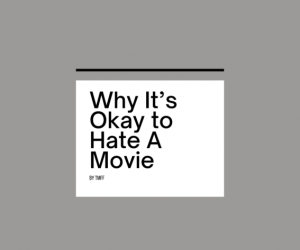Horror is one of the most polarizing film genres in cinema history, with some people refusing to watch any horror flick, no matter how acclaimed it is. There is also the elitist notion of some filmmakers looking down on anything related or in the genre. As subjective as films are, horror is a monumentally vital genre that has greatly the shifted cinema for the better.
Although horror has been around since the inception of film at the turn of the 19th century into the 20th century, the 1980s is often regarded as the mainstream golden age of the genre. But what makes 1980s horror so special? Well, let’s go through why 1980s horror was an essential time for cinema and its impact on film today.
Pushing the Boundaries on What’s Scary
The 1920s was a turning point for horror with the popularity of films such as Nosferatu (1922), The Cabinet of Dr. Caligari (1920), The Hunchback Of Notre Dame (1923), and many others. Still, without taking anything away from these films, the time was greatly limited with what filmmakers could do with special effects and storytelling.
The popularity of horror continued until the conclusion of World War II, where Hollywood took a big hit because of the invention of the television. Fewer films were made, and it wasn’t until the 1960’s New Hollywood era where cinema took off again. A couple of decades later, 1980s horror entered the mainstream and pushed the boundaries on what the audience could handle.
The New Hollywood era certainly allowed filmmakers to take deranged risks with horror in the 1980s. Knowing audiences were ready for such brutal films, and little interference from production studios was a filmmaker’s dream. Twenty to Thirty years prior, nobody would’ve thought about making the Halloween, Friday the 13th, or Alien franchises.
Innovative Special Effects
Besides the New Hollywood era freeing filmmakers’ visions for their films and pushing the limits on what can be done, special effects became a central focus of the 1980s. Body horror films such as The Fly (1986), Videodrome (1983), and The Thing (1982) were dominated by fantastic real-looking special effects thanks to makeup, design, and camera techniques.
CGI was also first invented in 1973 and took off in the 1980s because of what it could show outside of just what the camera could capture. With or without CGI, blood and gore was a focal point of 1980s horror and was a shock for so many audiences to dive into. Those body horror films made it okay and possible for all of the gory scenes in films we’ve seen since.
New Horror Genres
Not only were 1980s horror films a pivotal point for special effects, but they also showcased a wide range of new horror genres. Previously, 1920s and 1930s horror films typically were monster and creature flicks ranging from vampires to zombies and everything in between.
Although the 1980s had many monster and creature films, they also featured innovative horror genres such as slashers and psychological thrillers. These genres weren’t necessarily invented in the 1980s, but they took off with more films falling under their umbrella than ever before.
Horror Today vs 1980s Horror
Many horror films today have a bit of nostalgia in them from the 1980s. This nostalgia is used to appeal to audiences and to also give some respect to the groundbreaking time of 1980s horror. 1980s horror showed you could make a great horror flick with a small budget and don’t need to rely on big names to get an audience. Horror today wouldn’t exist without the horror of the 1980s.
Must-Watch 1980s Horror Films
- Aliens (1986)
- The Blob (1988)
- Cannibal Holocaust (1980)
- The Fly (1986)
- Friday The 13th (1980)
- Hellraiser (1987)
- Manhunter (1986)
- Scanners (1981)
- The Shining (1980)
- The Thing (1982)

















